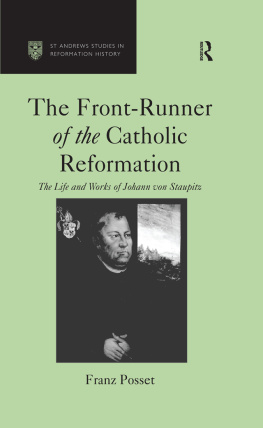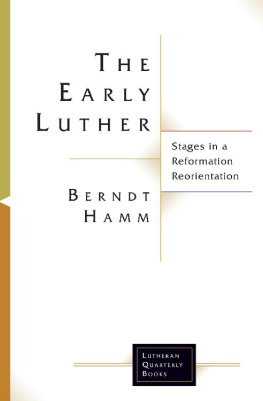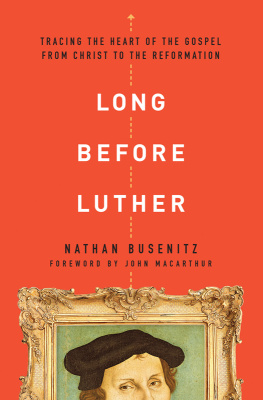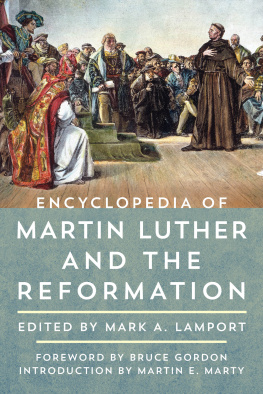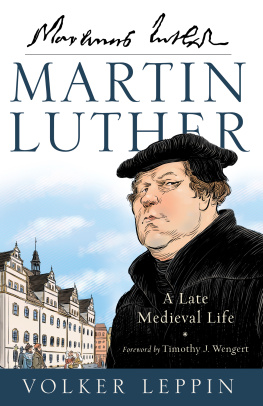First published 2007 by Ashgate Publishing
Published 2016 by Routledge
2 Park Square, Milton Park, Abingdon, Oxon OX14 4RN
711 Third Avenue, New York, NY 10017, USA
Routledge is an imprint of the Taylor & Francis Group, an informa business
Copyright Austra Reinis 2007
Austra Reinis has asserted her moral right under the Copyright, Designs and Patents Act, 1988, to be identified as the author of this work.
All rights reserved. No part of this book may be reprinted or reproduced or utilised in any form or by any electronic, mechanical, or other means, now known or hereafter invented, including photocopying and recording, or in any information storage or retrieval system, without permission in writing from the publishers.
Notice:
Product or corporate names may be trademarks or registered trademarks, and are used only for identification and explanation without intent to infringe.
British Library Cataloguing in Publication Data
Reinis, Austra
Reforming the art of dying : the ars moriendi in the German
Reformation (15191528). (St Andrews Studies in
Reformation History)
l.Death Religious aspects Christianity 2. Salvation
Christianity History of doctrines 16th century
3.Reformation
I.Title
236.1094309031
Library of Congress Cataloging-in-Publication Data
Reinis, Austra.
Reforming the art of dying : the ars moriendi in the German
Reformation (15191528) / Austra Reinis
p. cm (St Andrews Studies in Reformation History)
Includes bibliographical references and index.
ISBN 0754654397 (alk. paper)
1. Death Religious aspects Lutheran Church History of doctrines 16th century. 2. Funeral rites and ceremonies Germany History 16th century. 3. Funeral service Lutheran Church History 16th century. 4. Reformation Germany. I. Title. II. Series.
BT825.R43 2006
236.1-dc22
2005028548
ISBN: 978-0-7546-5439-1 (hbk)
This study is a revised version of the dissertation I submitted in partial fulfillment of the requirements for the doctoral degree in Reformation History at Princeton Theological Seminary.
I am grateful to Dr Elsie McKee for directing me into the fascinating area of scholarship on death and dying, to Dr Scott Hendrix for asking challenging questions, and to Dr Helmar Junghans for introducing me to the field of rhetorical analysis. All three of these scholars as well as Dr Paul Rorem I thank for abundant moral support and encouragement.
For their generous financial assistance, which allowed me to devote five years of my life to scholarship, I am indebted to Princeton Theological Seminary and the Martin-Luther-Gesellschaft. A subsequent summer grant from the Stiftung Leucorea in Lutherstadt Wittenberg enabled me to prepare the text for publication.
Introduction
Many books have been written on how we are to prepare for death: nothing but error, and people have only become more downcast. It employs two methods of analysis theological and rhetorical in order to characterize, respectively, the cognitive and the affective aspects of the reformers teaching on dying.
The theological analysis of these first Reformation books on dying shows that the authors perceived their readers for the most part as despairing of their salvation. They sought to assure them that on account of Christs victory on the cross they could be certain of their salvation. This constituted a radical break with traditional doctrine, according to which no one could presume to be certain of his or her eternal destiny.
The rhetorical analysis contributes to the recent research on the history of emotions by providing access to the affective dimension of the reformers teaching on death. Having themselves found peace and joy in the certainty of their salvation, the early authors of Sterbebcher did their utmost to persuade the dying that they too could face death with joy and confidence. To this end, many of them put to use the rhetorical skills they had acquired along with their theological training.
Death and dying in the Middle Ages
Much of the recent research on the history of death and dying has focused on the Christian death culture of medieval Europe: the doctrine of purgatory, prayers, masses and indulgences for the dead, funeral rites, burial customs, the cult of the saints and the art of dying.
The ritual of preparing for death was one of the focal points of late medieval death culture. While early Christians appear to have approached death joyfully, with confidence in their eternal salvation, over time this attitude was replaced with one of penitence and fear in anticipation of divine judgment. All of life came to be seen as preparation for this final struggle.
During the Early Middle Ages liturgical orders were developed to help dying persons prepare for death. Forgiveness of sins was the central concern of these orders; it was provided by a priest through the administration of the three deathbed sacraments penance, unction and communion.


